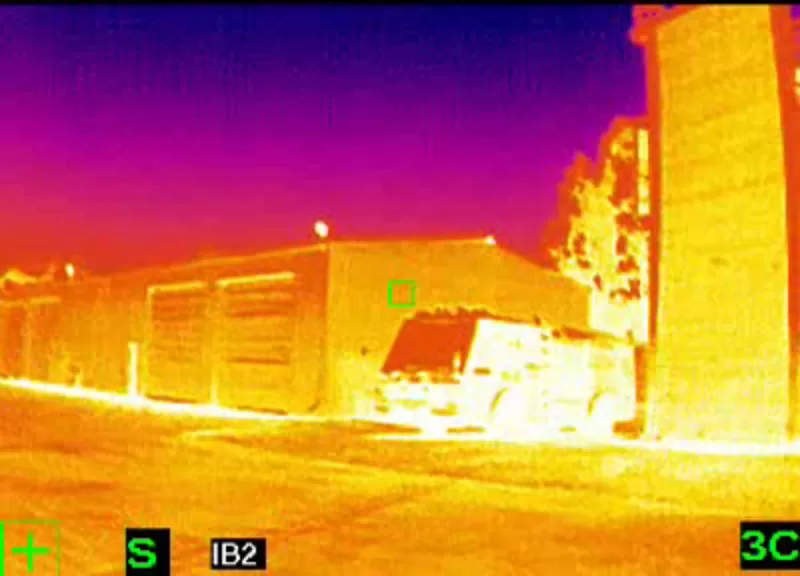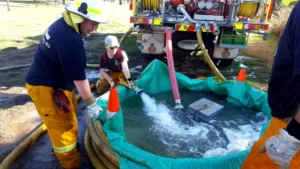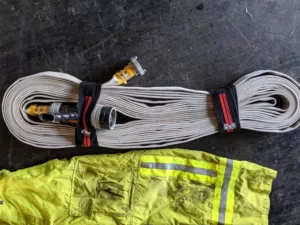Firefighter Search and Rescue Drills are essential for honing the skills required to locate trapped victims, firefighters or items in low-visibility situations. This drill focuses on a dynamic and practical exercise that uses Thermal Imaging Cameras (TICs) to simulate real-life scenarios. We’ll provide updated guidance on equipment, preparation, safety considerations, execution, and lessons learned to ensure that your crew is well-prepared for this great training exercise.
Equipment Required
- Structure: A suitable location for the drill, such as a fire station, hall, training facility, or residential structure (if available).
- Thermal Imaging Camera(s): Essential for locating objects or individuals in low-visibility environments.
- Heatable Object: This object, which should be safe to heat, simulates the target. It could be a heated metal object, a hot water bottle, or a heated wheat bag.
- Breathing Apparatus (BA) and Proper Personal Protective Equipment (PPE): Ensure that all participants have the necessary protective gear.
- Radios, Tools, and Hose Lines: Standard firefighting equipment for communication and tactical purposes.
How to Prepare for the Drill
The success of this drill hinges on a dark, low-visibility environment. Achieve this by using a smoke machine, hot cell training centre, or any other method that allows firefighters to operate TICs effectively. A spacious hall, fire station, training centre, or generous volunteer’s house can serve as the setting.
Heat the chosen object and position it securely within the structure. The effectiveness of the object depends on your environment. For example, a hot water bottle is suitable for a cold engine bay in winter but may not work well in a heated structure. If heating a metallic object, take the necessary precautions to prevent fire and burn hazards.
Safety Considerations for Firefighters
- Heat the object safely, avoiding anything that may rupture or explode.
- Ensure that all participants wear the correct PPE for the specific scenario or environment.
- Conduct buddy checks and adhere to BACO (Breathing Apparatus Control Officer) procedures.
- Conduct a safety briefing for all participants before commencing the drill.
- Appoint a safety officer responsible for dynamic risk assessments, especially in a hot environment.
- Plan for rehabilitation (rehab), as participants may be exposed to elevated temperatures during the drill.
How to Undertake the Drill
- Treat the scenario as a live incident. After the initial briefing, have crews board the trucks and drive a short distance away. Upon receiving the all-clear signal, respond with lights and sirens, positioning the appliance appropriately upon arrival.
- The Officer in Charge (OIC) should conduct a 360-degree size-up and, if possible, turn off the power for firefighter safety. While this is happening, firefighters should exit the appliance, don BA, and gather the necessary equipment.
- Once the entry crew is prepared, perform buddy checks and BACO procedures. At this point, the OIC tasks the crew with searching for and locating the heated object within the structure. The ease of finding the object may vary depending on the object’s nature.
- Firefighters enter the structure using door entry techniques and employ gas cooling as needed. They should immediately begin the search and rescue operation using left- or right-hand search methods.
- Regularly use the TIC to scan each room or environment for a heated object or incapacitated person. Practise regular radio situation reports (sitreps) by the firefighters inside the building.
- Upon locating the search object using the TIC, send an ‘object located’ radio message and exit the structure as a crew. If using a heated metallic object, teams may need to describe the object’s location but leave it in place. Ensure crews are briefed on this process.
Lessons Learned
This practical exercise offers valuable lessons for firefighters, particularly those new to search and rescue operations. Key themes to focus on include:
- Mastering the operation of TICs.
- Effective radio messaging and communications.
- Implementation of Incident Command Management System (ICMS).
- Structural firefighting, door entry techniques, and hose lays.
Thanks to the crews at FRNSW 205 and 475 for contributing to this drill.




